Discover the profound wisdom of Vedic Geometry & Mathematics Ancient India, where intricate geometrical principles were seamlessly integrated into rituals, architecture, and astronomical studies. This blog delves into the rich heritage of ancient Indian geometry, highlighting its significance and applications across various domains.
Table of Contents
- Intro
- Sheyana Chithi Per Layer 200 Bricks, Total 5 Layers of 1000 Bricks
- Ujjain Mahakaal: The Historical Powerhouse of Jyotishya Shastra
- Geometry in Jyotishya
- Shilpa Shastra – Walls of Temples
- Shilpa Shastra – Pillars of Temples
- Shilpa Shastra – Arches
- Shilpa Shastra – Vimanas
- Ganesh Yantram
- Bhairava Yantram
- Sri Mahalakshmi Yantram
- Sri Yantram
- FAQ
Intro
Vedic Geometry & Mathematics Ancient India reveals a sophisticated understanding of geometry that permeated various aspects of life and culture. Ancient Indian scholars utilized geometric principles in rituals, architecture, and even astronomy, showcasing an advanced grasp of mathematical concepts. This section explores the foundational elements of Vedic geometry, highlighting its significance and sources.
Sources of Vedic Geometry
The roots of Vedic geometry can be traced back to several ancient texts and scriptures, primarily the Vedas. The most prominent among these are:
- Sulba Sutras: These texts detail the geometrical principles necessary for constructing altars for Vedic rituals.
- Shilpa Shastra: This encompasses guidelines for temple architecture, sculpture, and other forms of art.
- Jyotisha: As a branch of Vedic knowledge, it includes astronomical calculations vital for timing rituals and events.
- Srividya: Focused on the divine manifestations through geometrical diagrams, this branch emphasizes symmetrical designs.
Basic Vedic Unit of Measurement – ANGULA
In Vedic geometry, the angula serves as the fundamental unit of measurement. Defined as the length of thirty-four sesame seeds stacked end to end, it is approximately four to five inches in contemporary terms. This unit was crucial for the construction of various geometrical shapes, particularly in the context of rituals and altars.
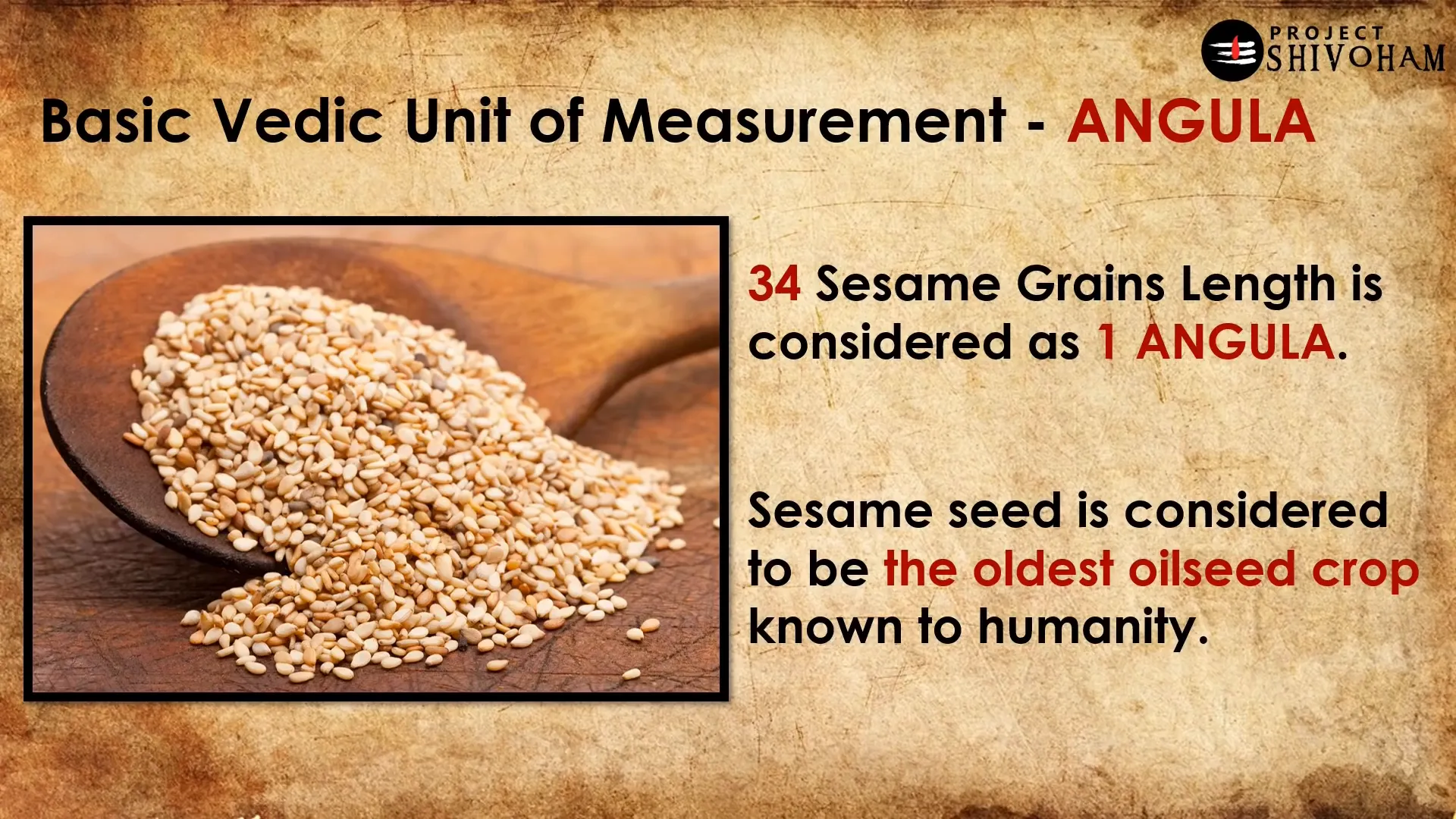
Construction of Square with Sulbha Sutras
One of the remarkable techniques described in the Sulba Sutras is the method for constructing a square aligned with cardinal directions. Ancient practitioners employed a simple yet effective approach using a stick and a string to identify directions and draw precise shapes.
The process involves:
- Erecting a stick and tying a string to it to draw a circle on the ground.
- Using the shadow of the stick at sunrise to establish the east-west line.
- Drawing circles with specific diameters to find intersection points, which then define the corners of the square.
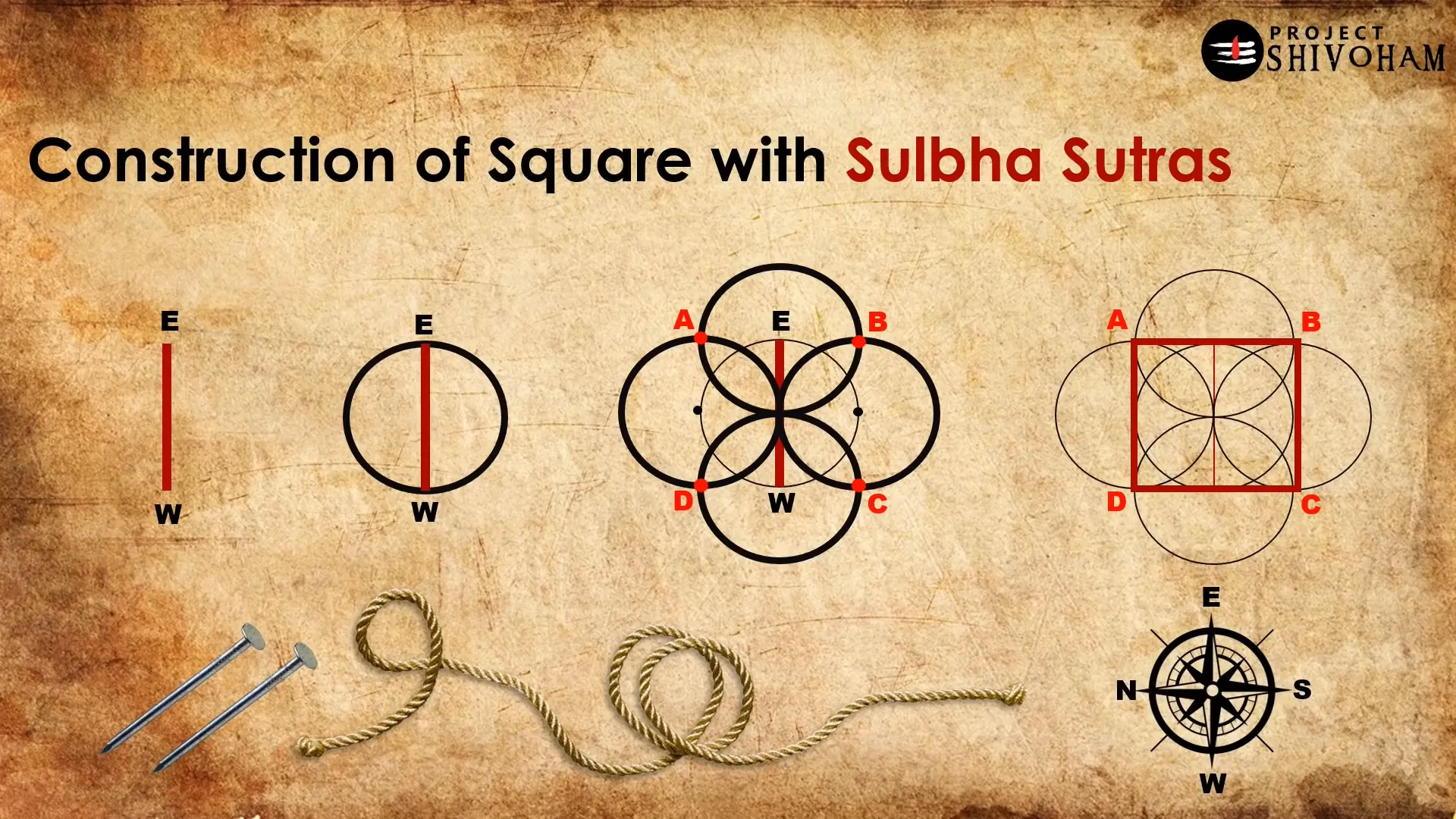
Shapes of Yagnya Chithis
The Yagnya Chithis, or fire altars, come in various shapes depending on the purpose of the ritual. Each shape is imbued with specific significance:
- Square: Typically used for general offerings.
- Circle: Symbolizes completeness and unity.
- Triangular: Often associated with specific deities or purposes.
- Falcon-shaped: Constructed for rituals aimed at prosperity.
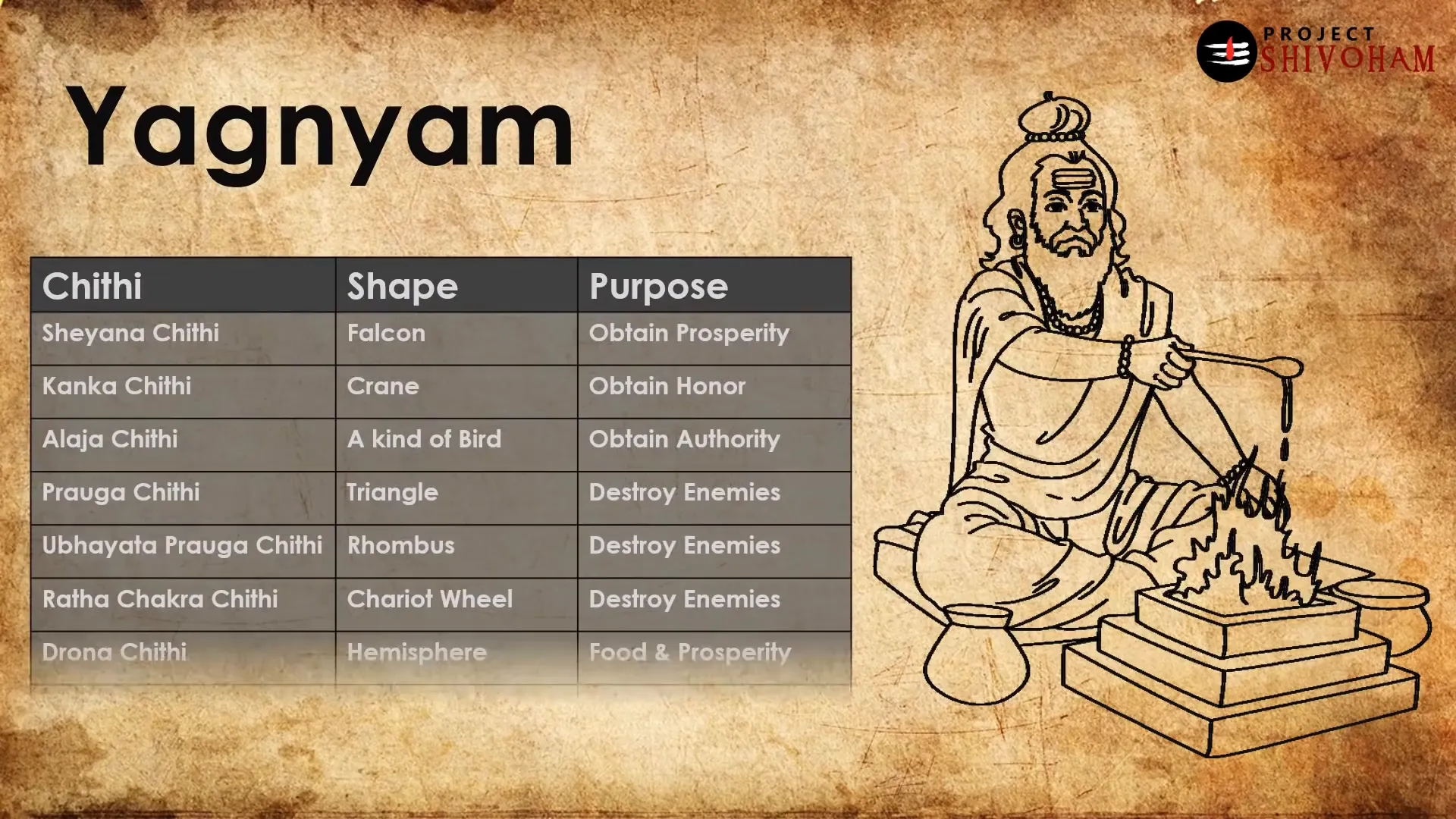
Maharishi Baudhayana Sulbha Sutram
Maharishi Baudhayana’s contributions to Vedic geometry are significant. He is credited with formulating principles that are foundational to geometry, including what is now known as the Pythagorean theorem. His work in the Sulba Sutras laid the groundwork for understanding the relationships between different shapes.
For instance, Baudhayana articulated that the area of a rectangle is equivalent to the area of the square formed by its diagonal, a principle that would later be recognized as fundamental in mathematics.
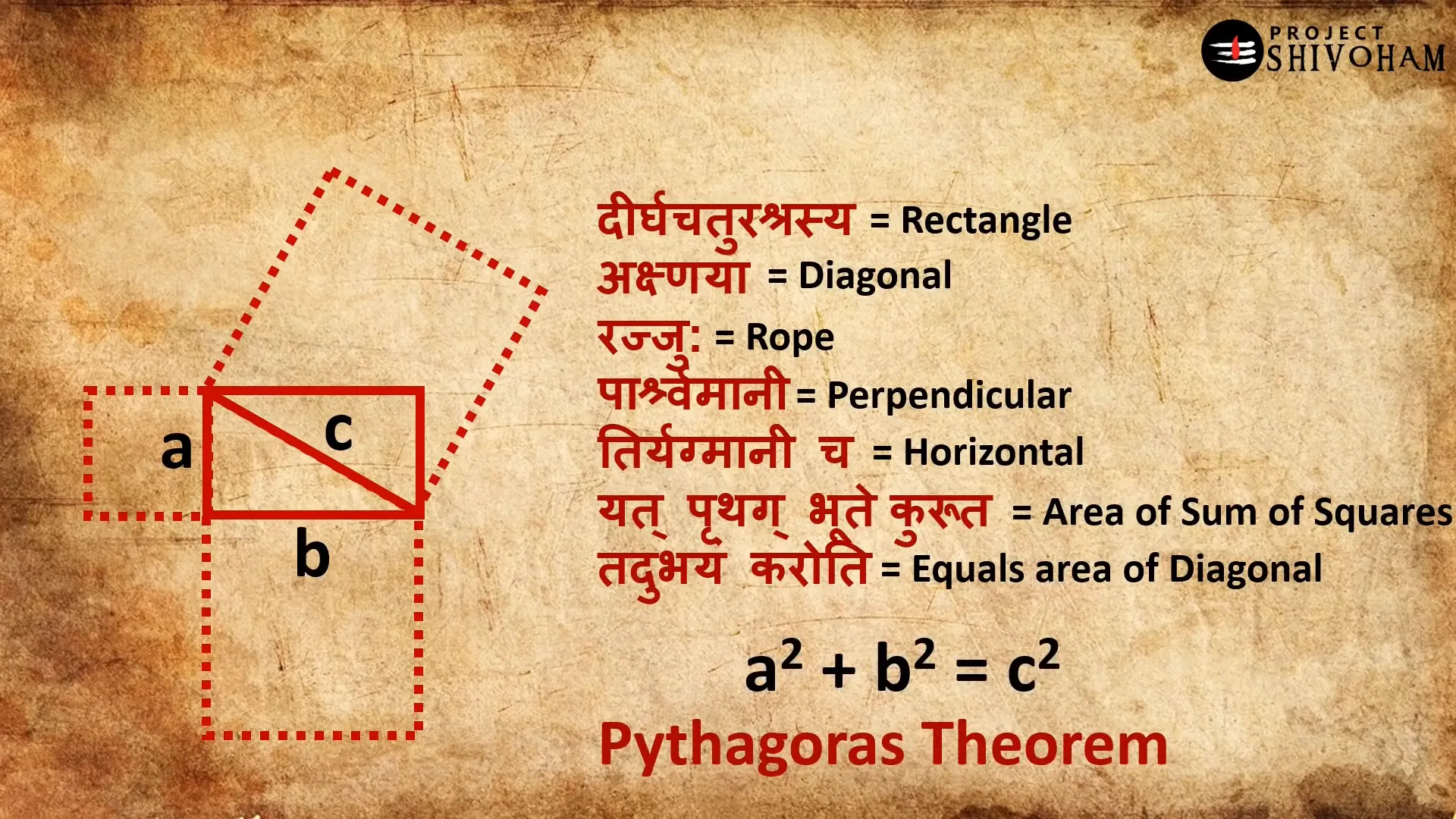
Application of Maharishi Baudhayana Sulba Sutra
The practical applications of Baudhayana’s Sulba Sutras extend beyond theoretical mathematics. These principles were employed in the intricate construction of fire altars, ensuring that the shapes adhered to both ritualistic and geometric requirements. The construction process involved precise calculations and measurements to maintain the integrity of the designs.
For example, the design of the Shayna Chitti, a fire altar shaped like a falcon, required meticulous planning to ensure that it was constructed using exactly one thousand bricks distributed across five layers, with each layer containing two hundred bricks.
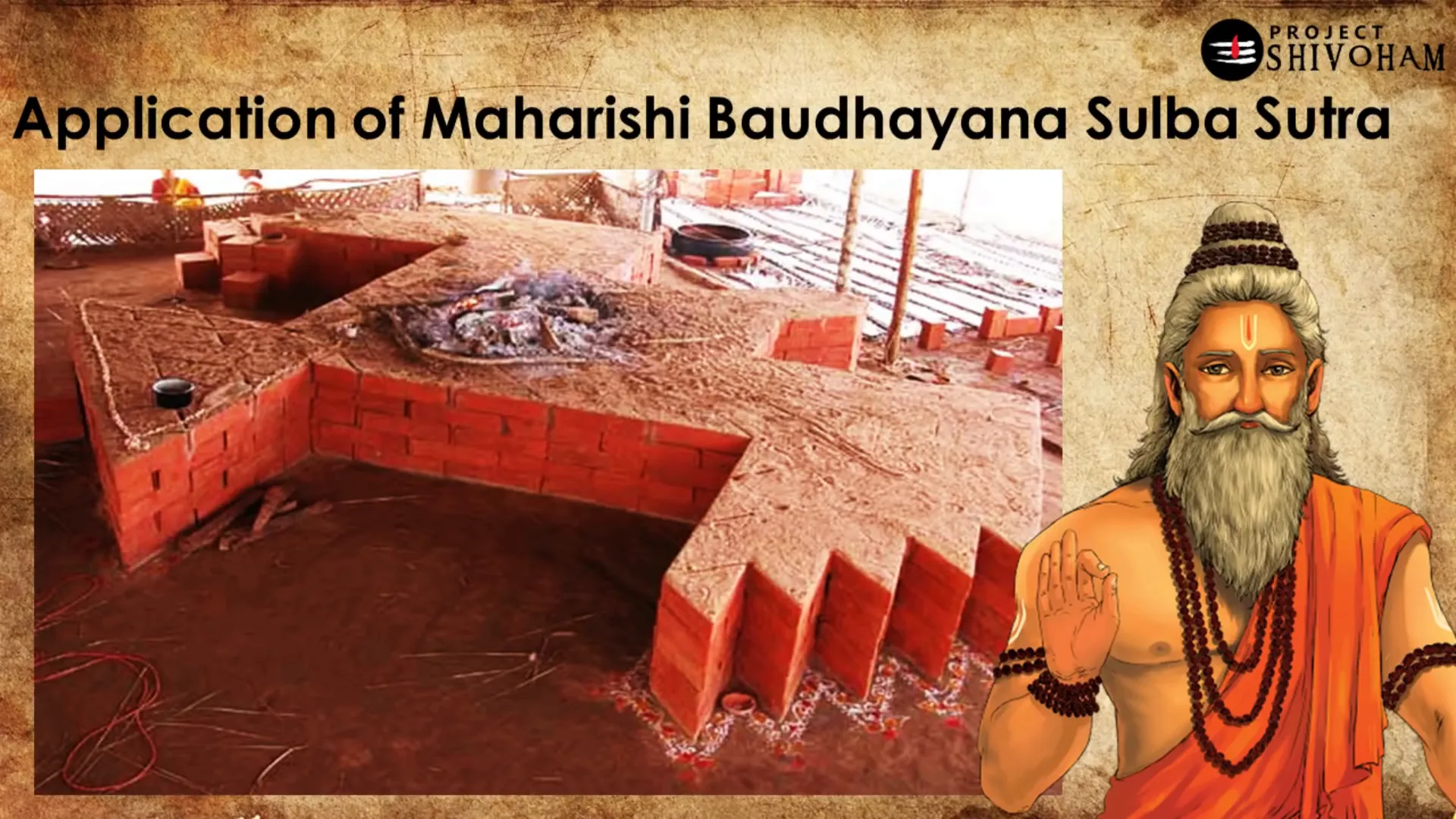
Sheyana Chithi Per Layer 200 Bricks, Total 5 Layers of 1000 Bricks
The construction of the Sheyana Chithi is a remarkable example of ancient Indian geometry and its application in ritualistic practices. Each layer of this fire altar consists of precisely 200 bricks, culminating in a total of 1000 bricks across five layers. The layout is meticulously designed, with odd-numbered layers differing from even-numbered ones.
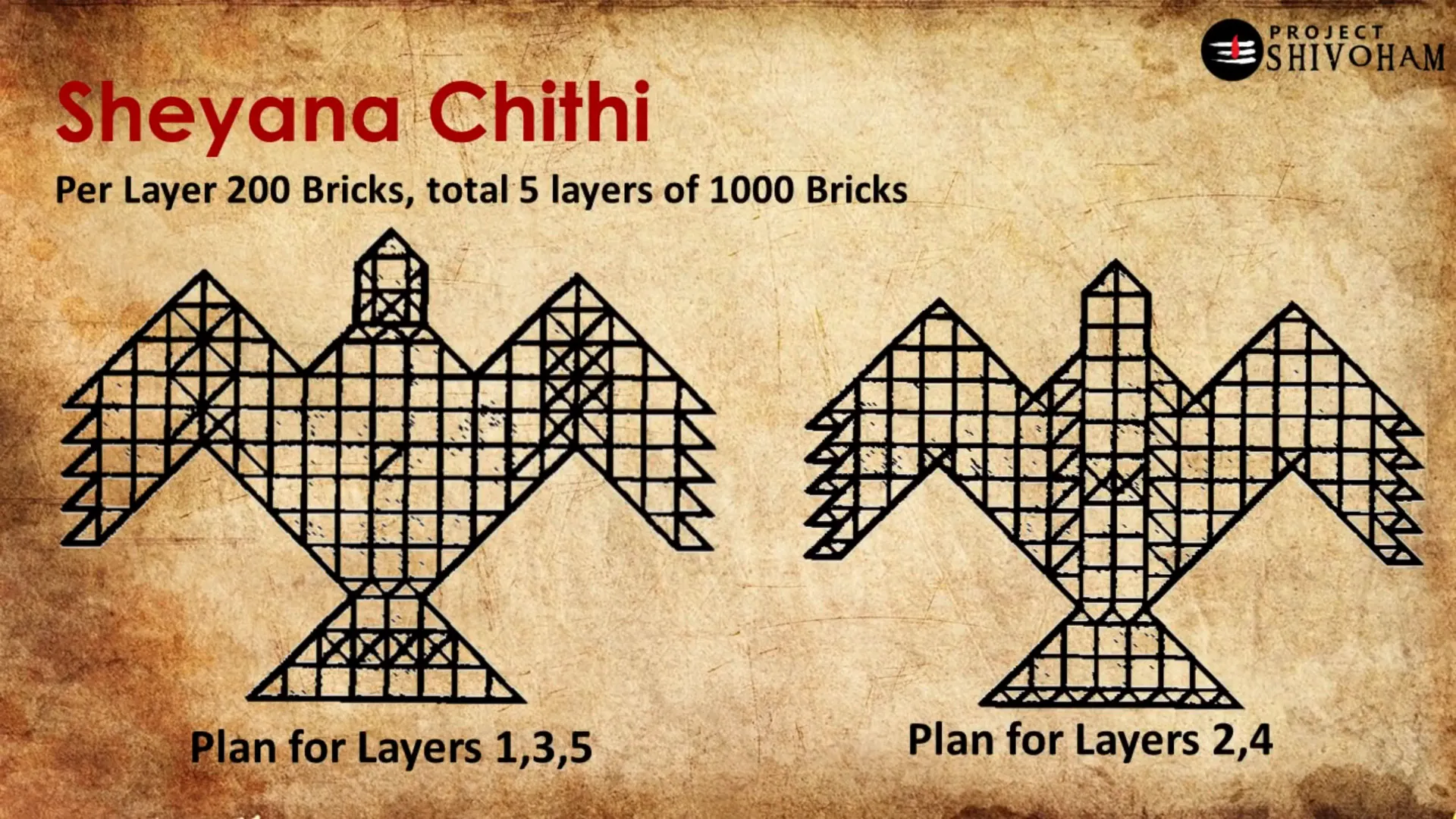
This design complexity showcases the advanced understanding of geometry by ancient Indian architects and mathematicians. The execution of such intricate designs without modern tools or equipment illustrates the ingenuity of those who constructed these altars. The Sheyana Chithi stands as a testament to the precision and skill involved in Vedic geometry.
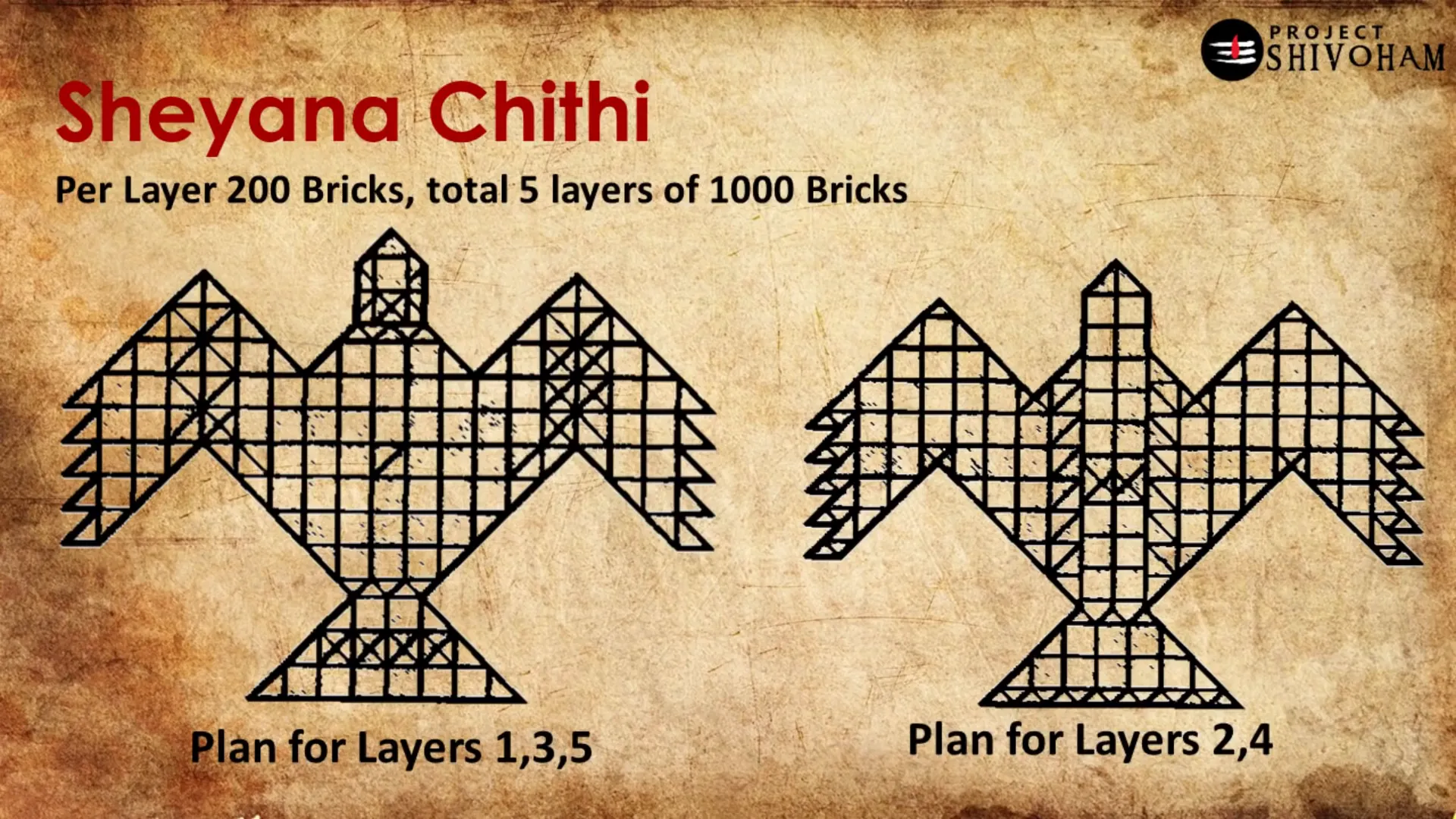
Ujjain Mahakaal: The Historical Powerhouse of Jyotishya Shastra
Ujjain, a city steeped in history, is pivotal in the study of Jyotishya Shastra. It is strategically located on the Tropic of Cancer, making it a critical point for celestial observations and timekeeping in ancient India. Ujjain was historically recognized as the prime meridian, where the counting of the day began.
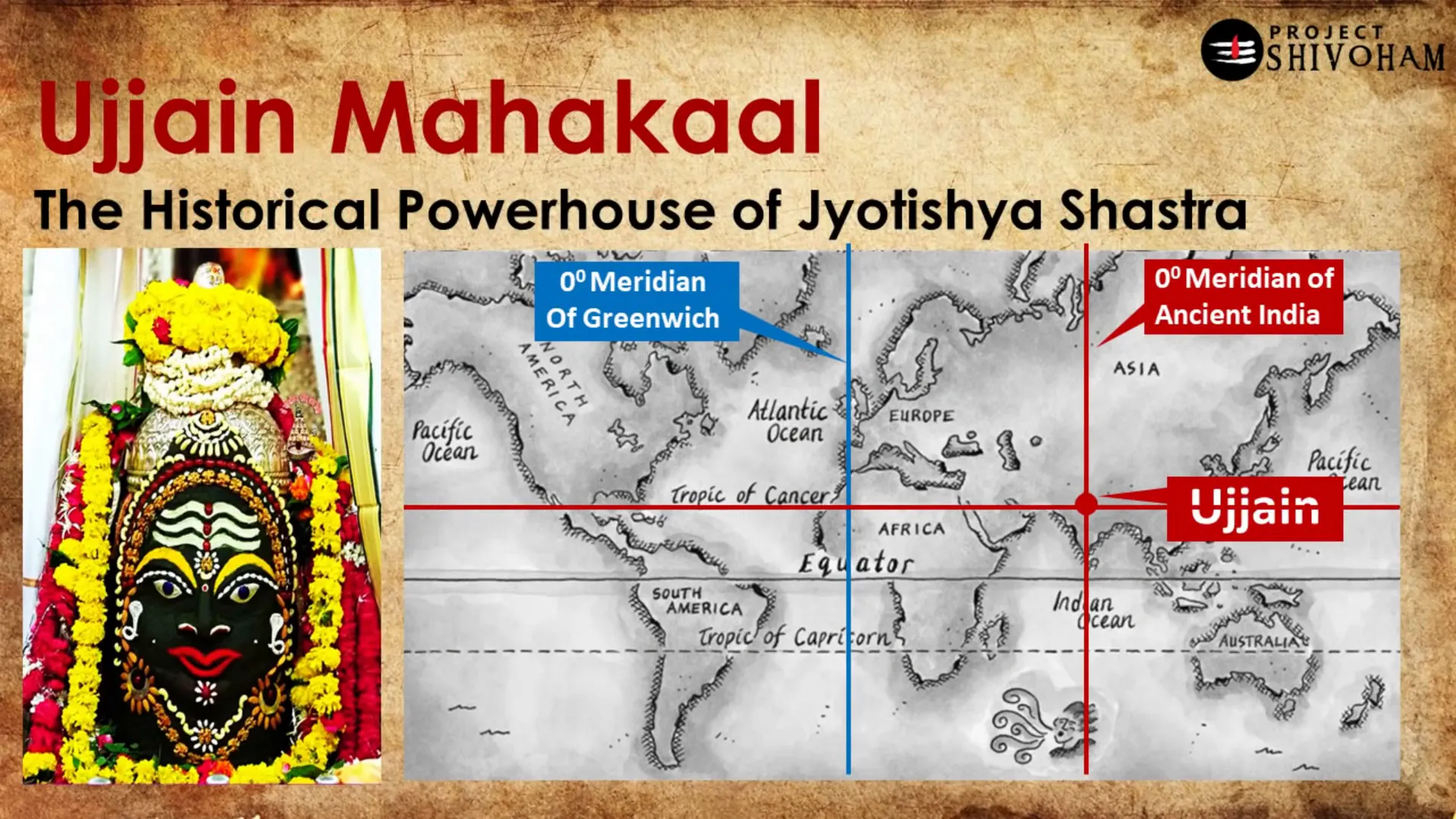
Moreover, Ujjain has been home to numerous astronomers and mathematicians who significantly contributed to Indian mathematics and astronomy. The city is also renowned for its association with Lord Shiva, worshipped here as Mahakal, the lord of time and death. This connection emphasizes the importance of time in Jyotishya, where celestial movements are believed to influence human lives.
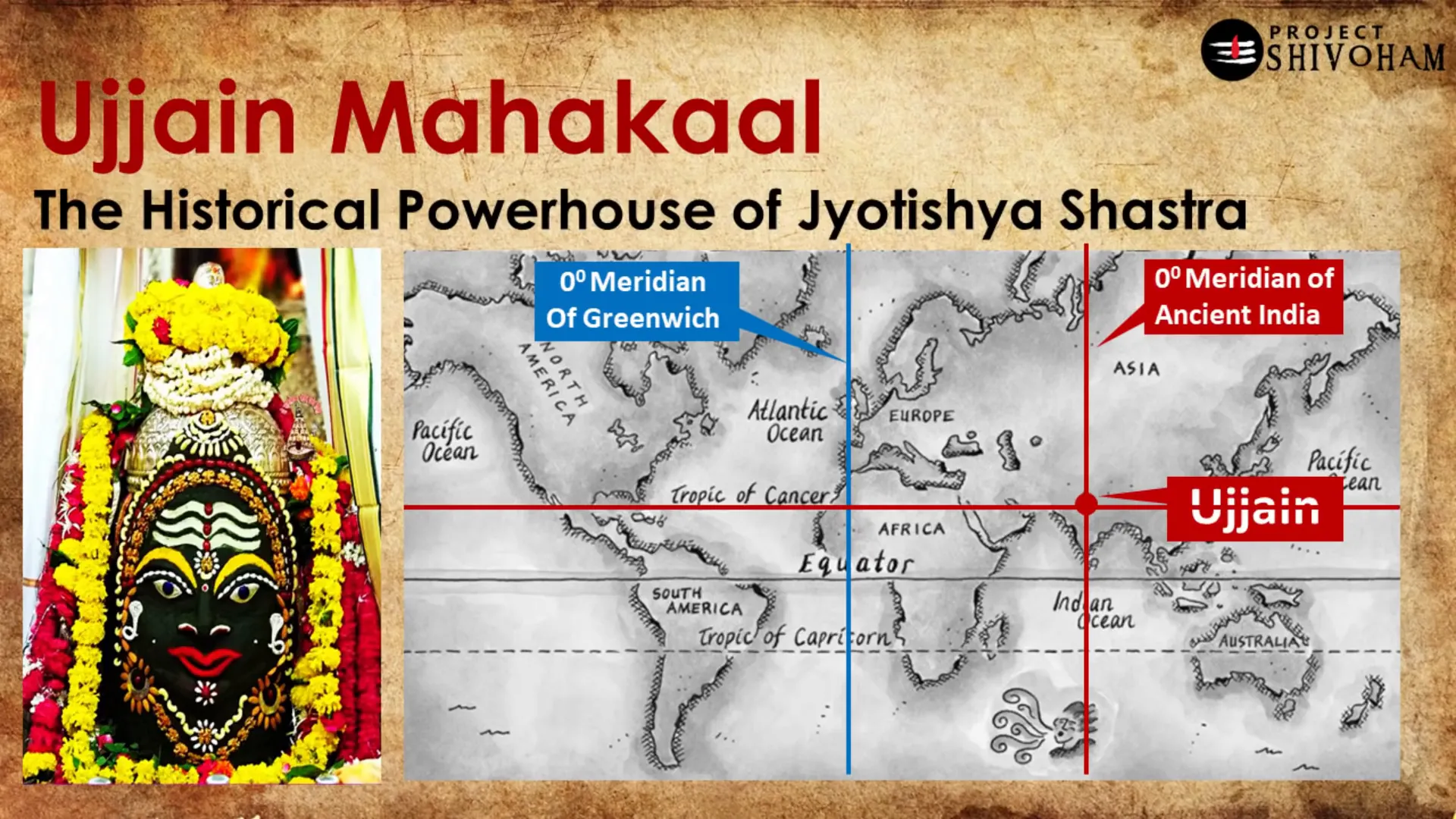
Geometry in Jyotishya
Geometry plays a crucial role in Jyotishya, particularly in the construction of astronomical observatories and the calculation of planetary positions. Ancient Indian astronomers utilized geometric principles to design structures that facilitated precise observations of celestial bodies.
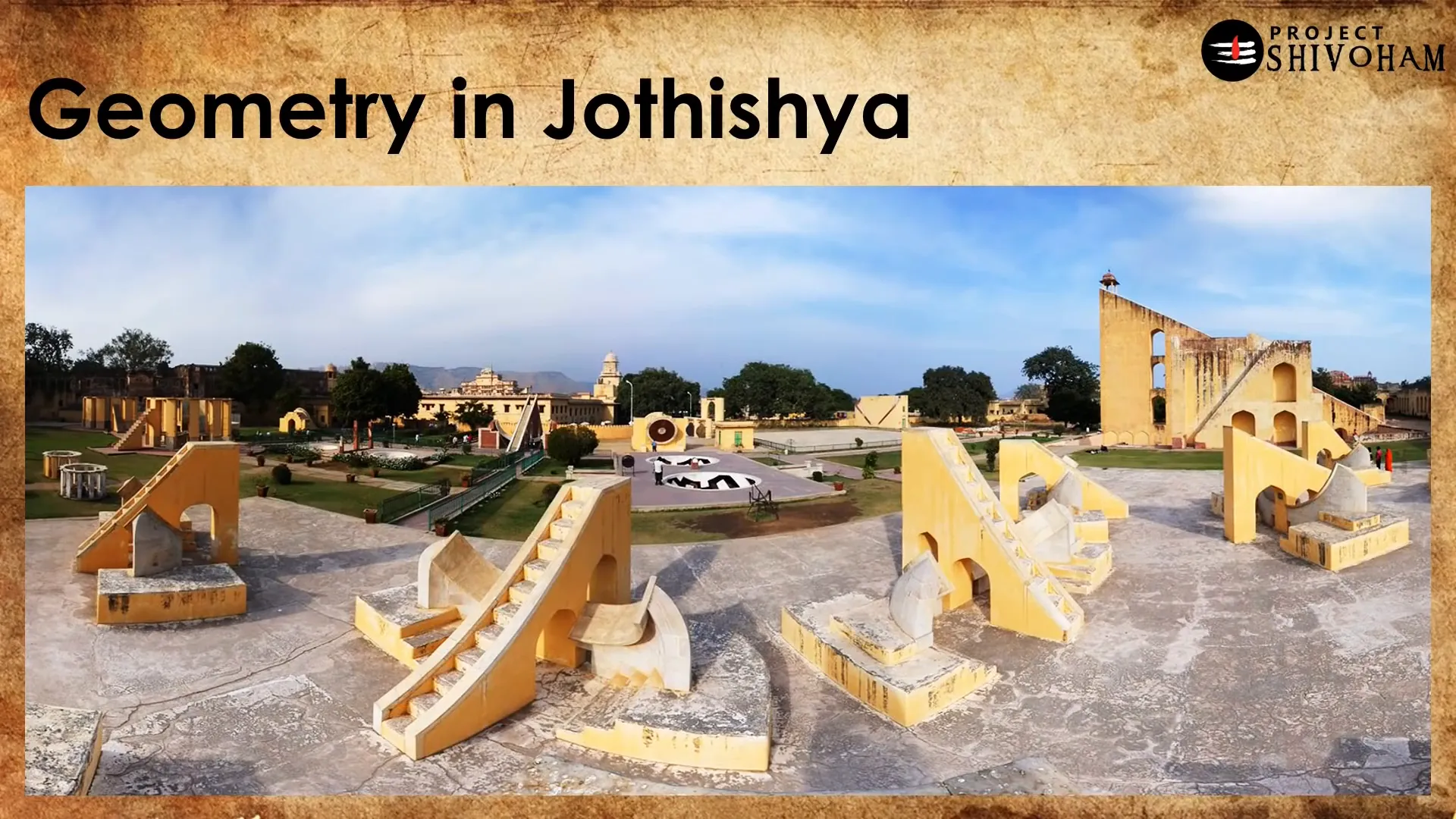
Furthermore, geometry was essential for calculating the radius of planets and conducting trigonometric observations necessary for understanding their relative positions. Instruments like astrolabes, developed using geometric concepts, were vital for these calculations.

Shilpa Shastra – Walls of Temples
Shilpa Shastra encompasses the art and science of temple architecture in ancient India. The walls of temples are adorned with intricate designs, each reflecting the deity’s significance and adhering to specific guidelines outlined in ancient texts like Agama and Manasara.
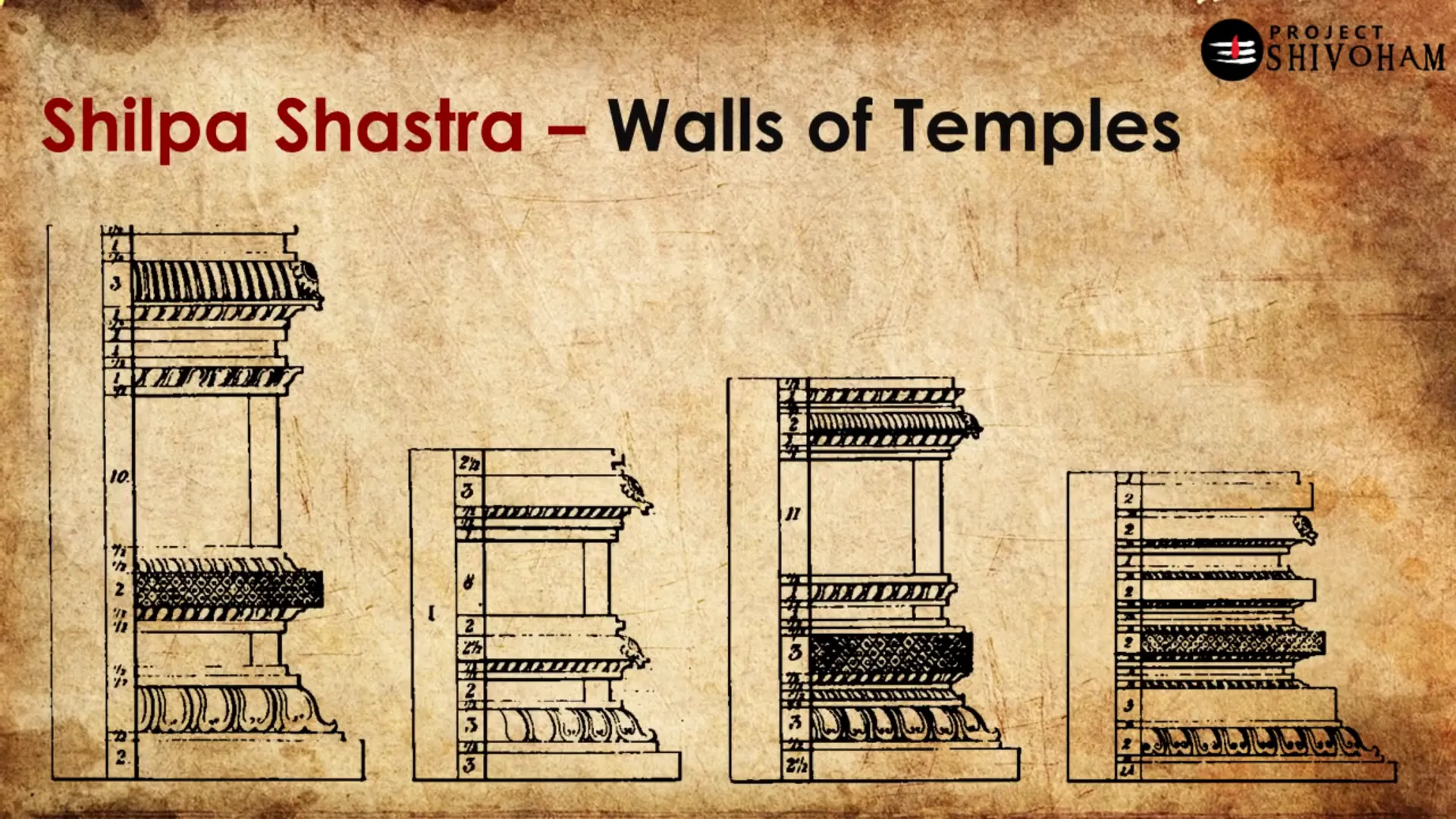
These designs are not arbitrary; they follow precise geometrical principles that enhance both the structural integrity and aesthetic appeal of the temples. The craftsmanship involved in temple construction demonstrates a sophisticated understanding of geometry, ensuring that each element serves both a functional and spiritual purpose.
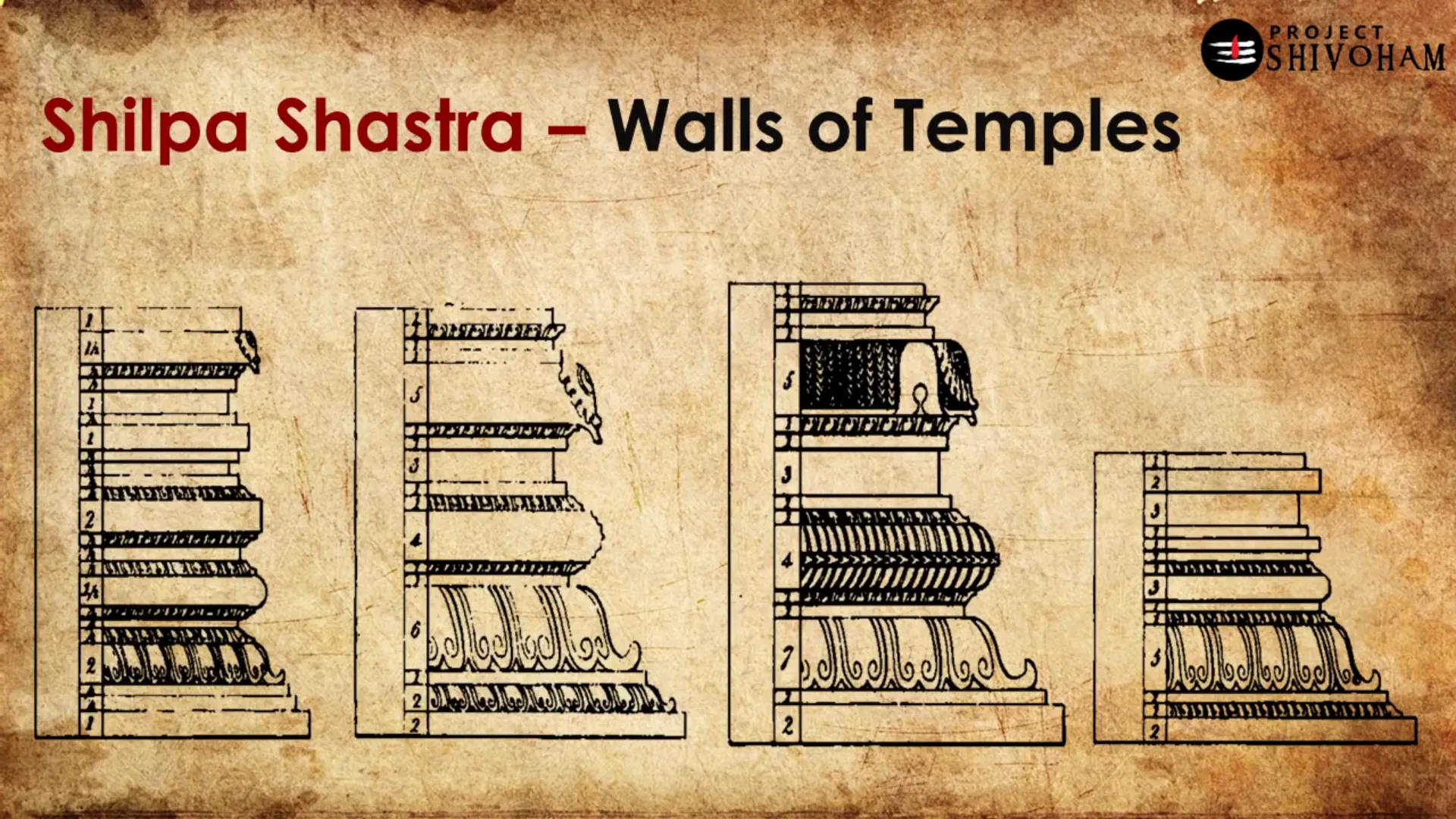
Shilpa Shastra – Pillars of Temples
The pillars of temples, as described in Shilpa Shastra, serve as both structural supports and decorative elements. Each pillar is designed with geometrical guidelines that ensure stability while also reflecting the artistic traditions of the time.
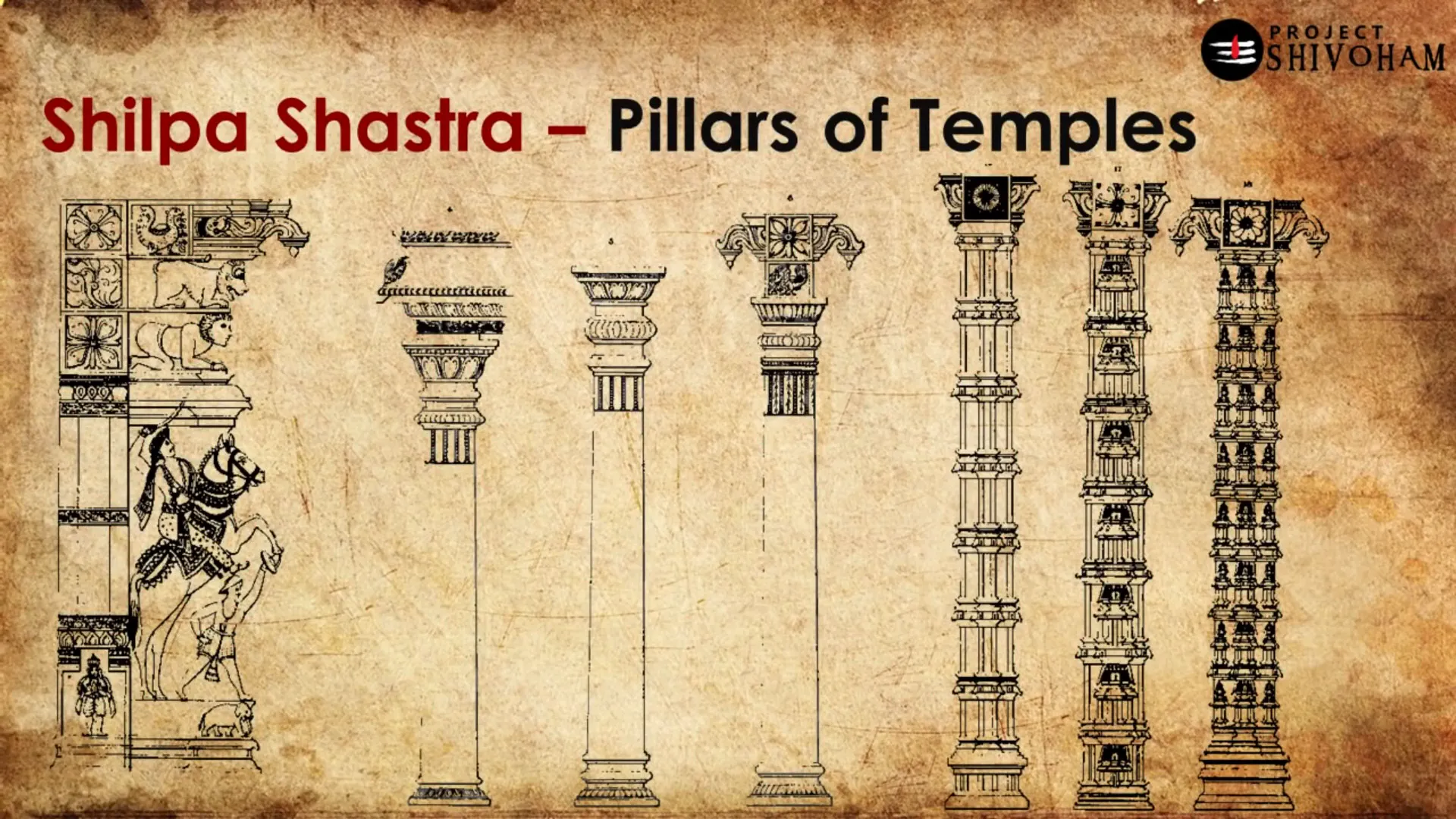
These guidelines encompass dimensions, proportions, and decorative motifs, all of which are rooted in the principles of Vedic geometry. The aesthetic qualities of the pillars not only enhance the beauty of the temple but also contribute to its spiritual ambiance.
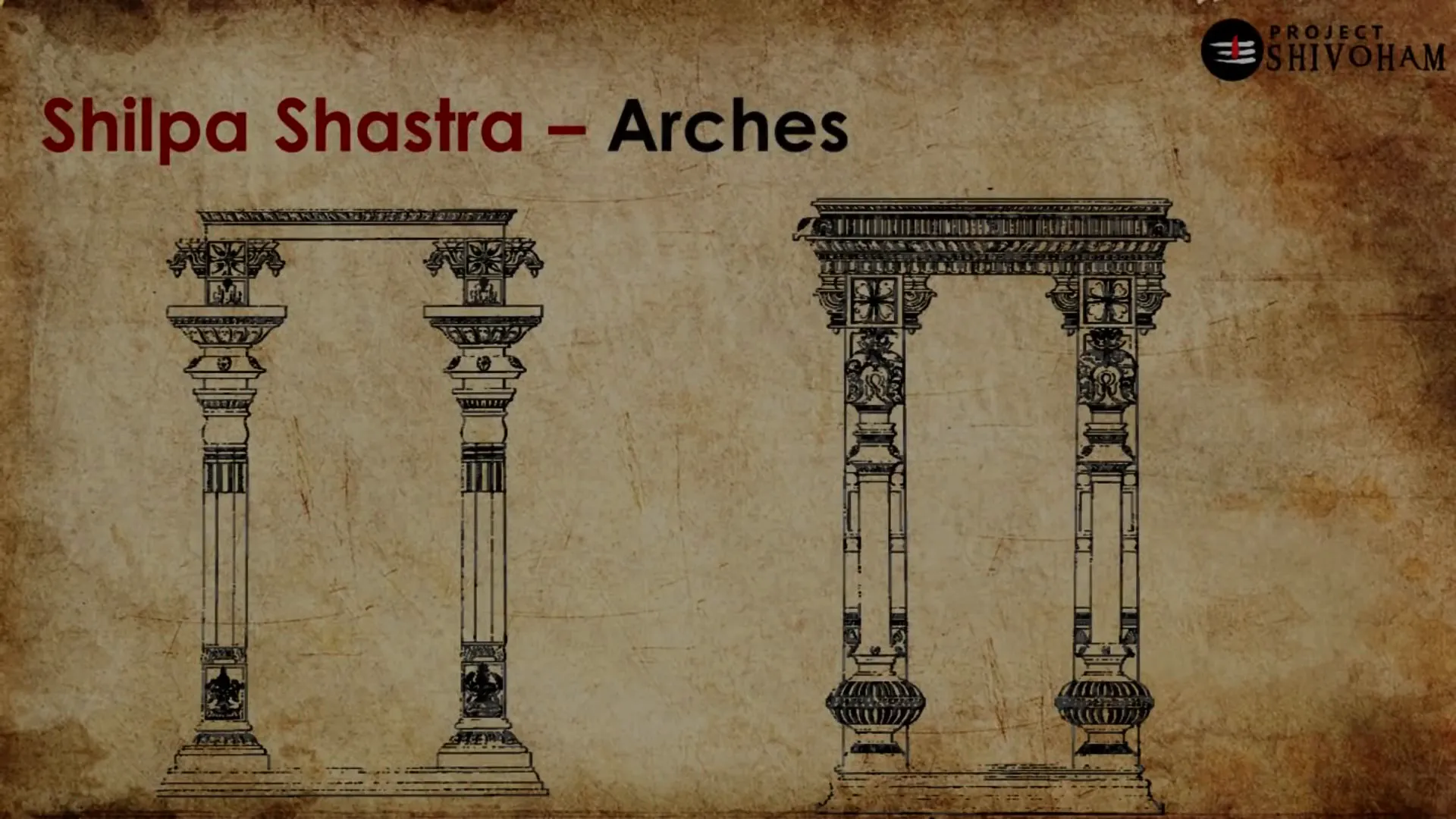
Shilpa Shastra – Arches
Arches are another critical element in temple architecture, showcasing the innovative use of geometry in Shilpa Shastra. The design of arches involves complex calculations to ensure they can support the weight of the structure above while maintaining aesthetic appeal.
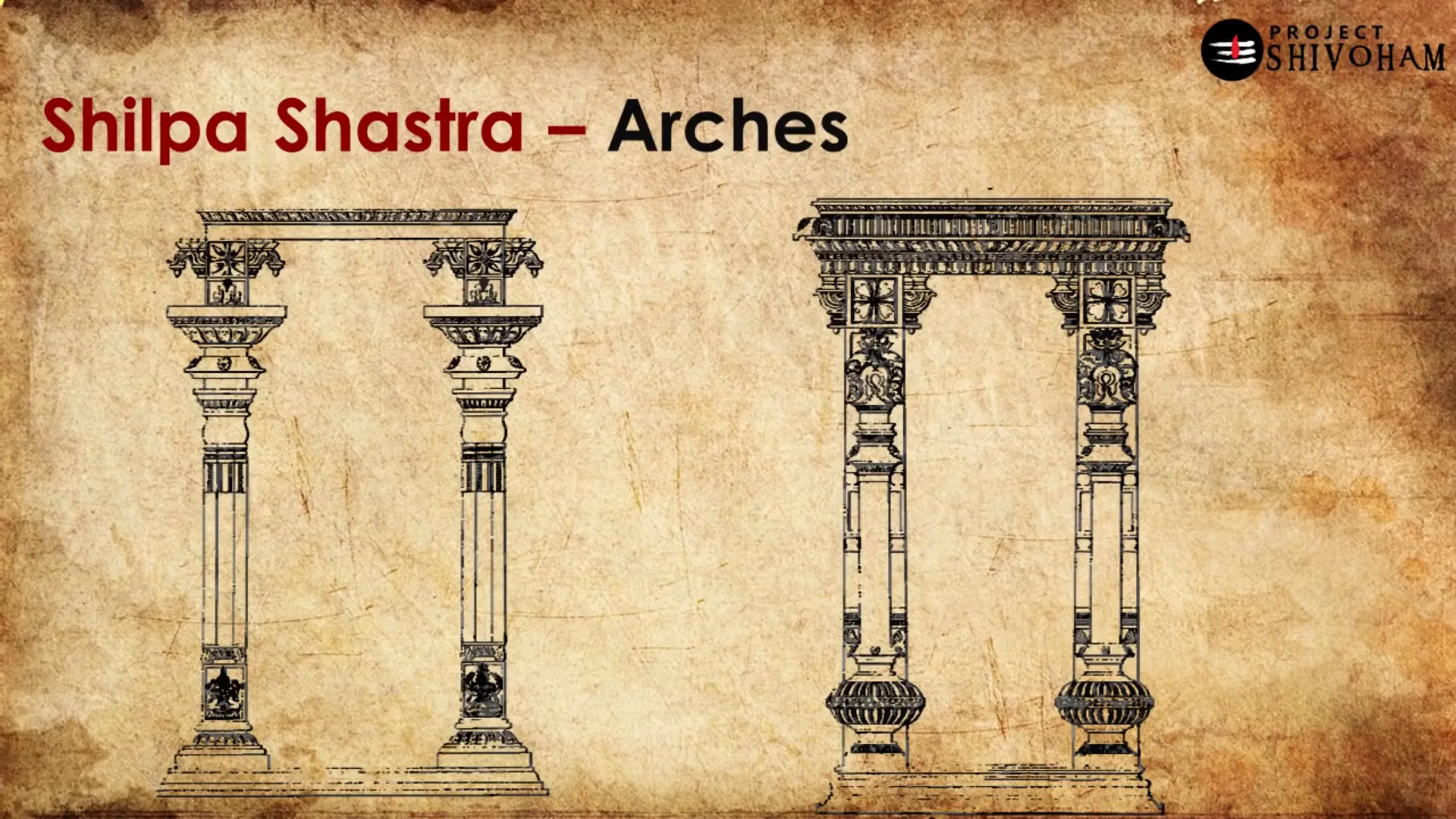
These arches are often adorned with intricate carvings and sculptures that tell stories from mythology and convey religious significance. The geometric precision in their construction reflects the advanced engineering skills of ancient Indian artisans.
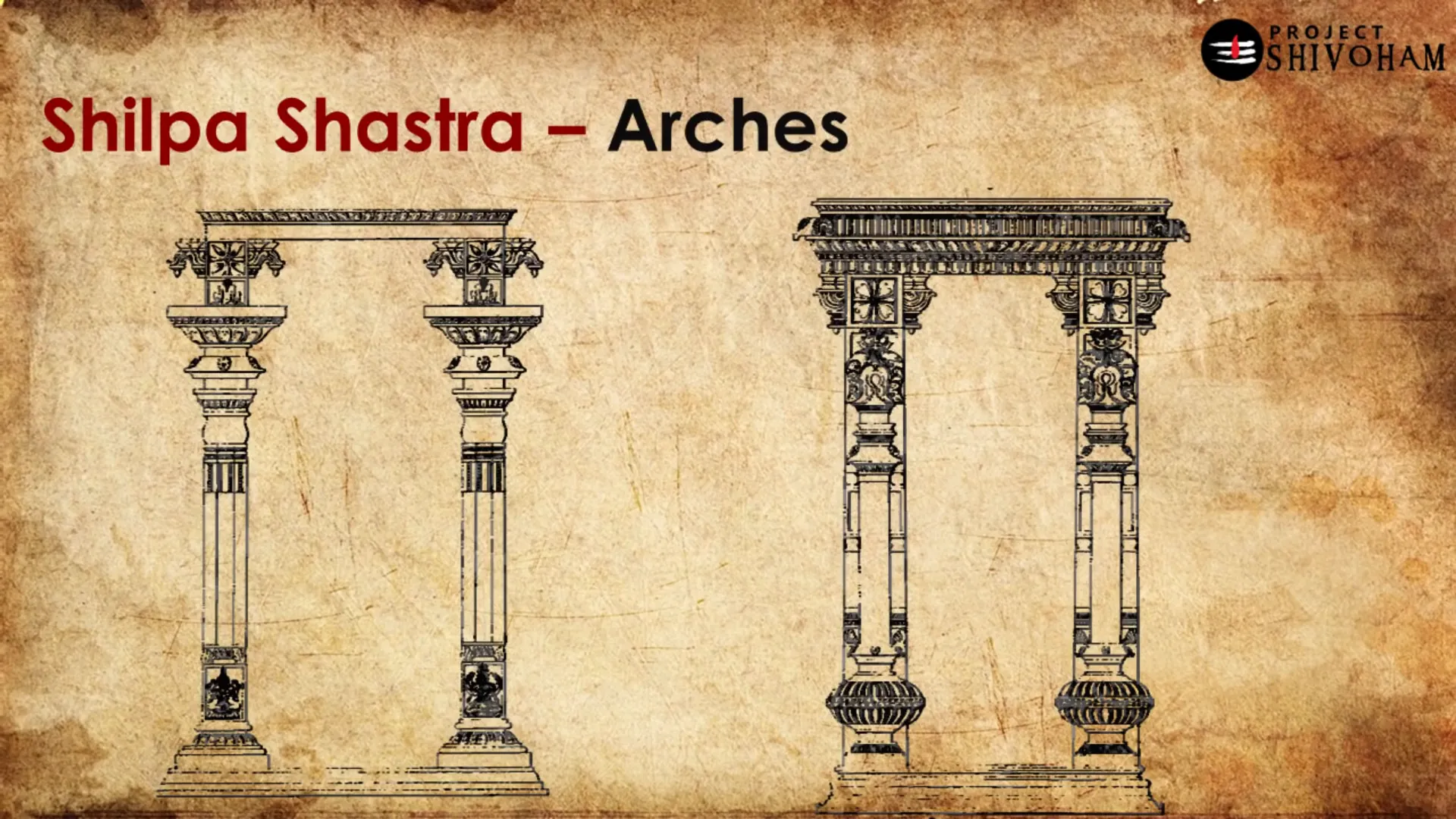
Shilpa Shastra – Vimanas
The vimanas, or towers of temples, are among the most striking features of Indian architecture. Shilpa Shastra provides detailed guidelines for their construction, emphasizing both structural stability and aesthetic design.
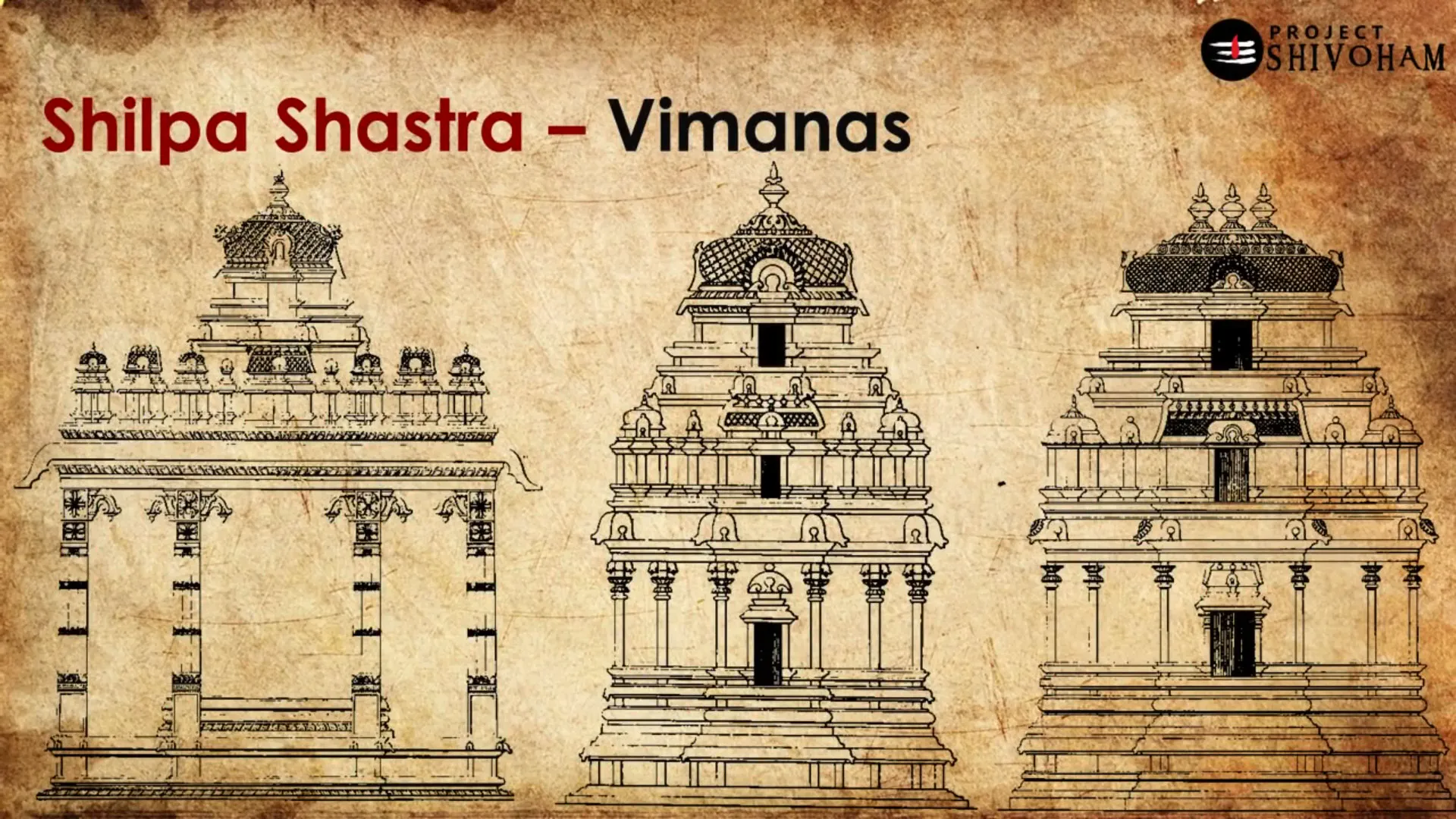
These structures are layered and sculpted according to specific geometrical principles, ensuring that they are not only visually magnificent but also resilient against the elements. The intricate designs on the vimanas represent the pinnacle of artistic expression in temple architecture, harmonizing geometry with spirituality.
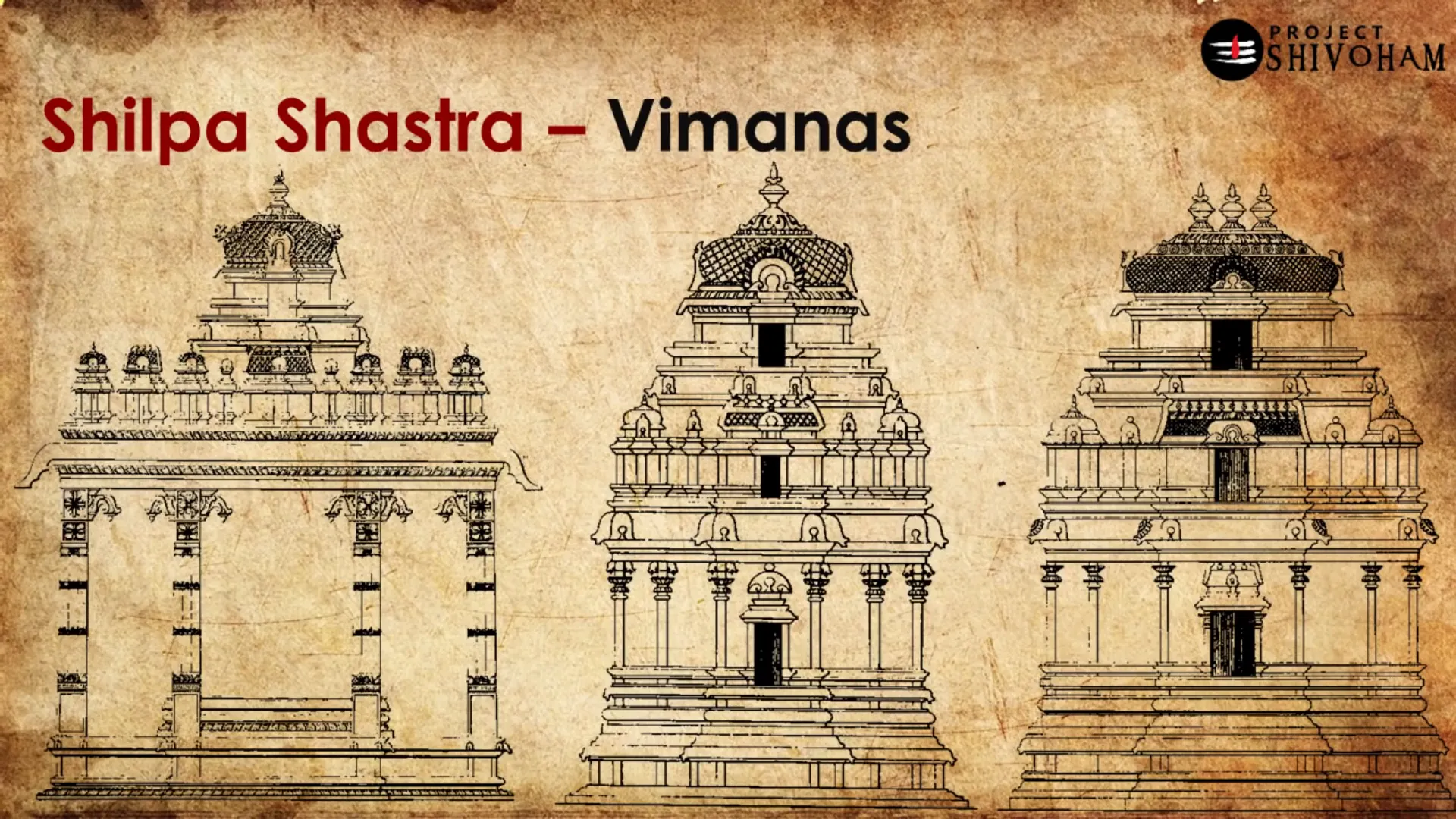
Ganesh Yantram
The Ganesh Yantram represents the divine presence of Lord Ganesha, the remover of obstacles and the deity of wisdom and intellect. This yantra is often utilized in rituals to invoke Ganesha’s blessings for success in endeavors. The geometric design of the Ganesh Yantram is not merely decorative; it embodies specific proportions and symmetrical arrangements that enhance its spiritual efficacy.
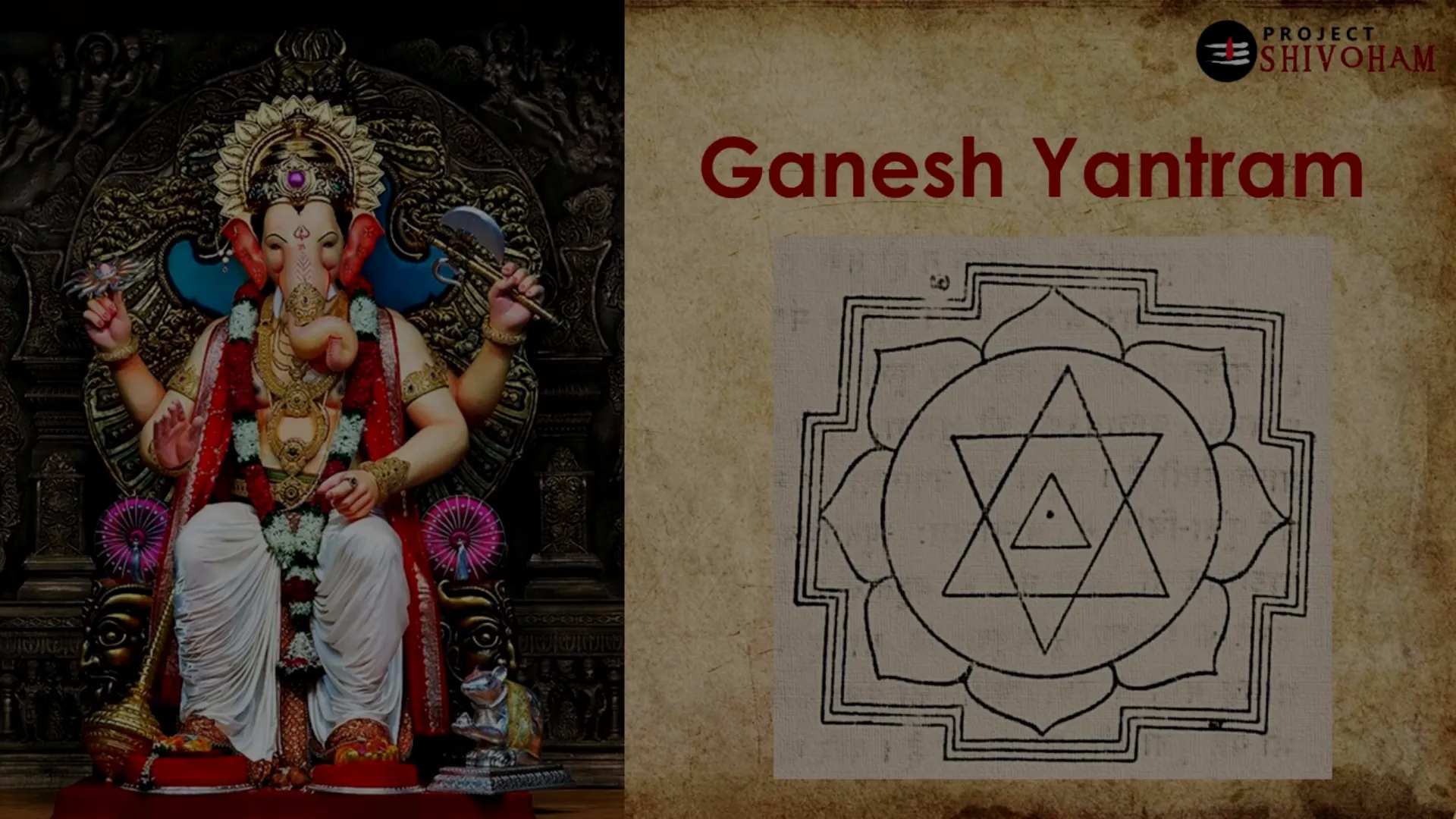
The construction of the Ganesh Yantram involves precise measurements and angles, ensuring that the yantra is consecrated correctly. The yantra typically features a central point, called a bindu, which symbolizes the source of creation. Surrounding this bindu are various geometric shapes that represent the attributes of Lord Ganesha. Each segment of the yantra resonates with different energies, contributing to its overall power during rituals.
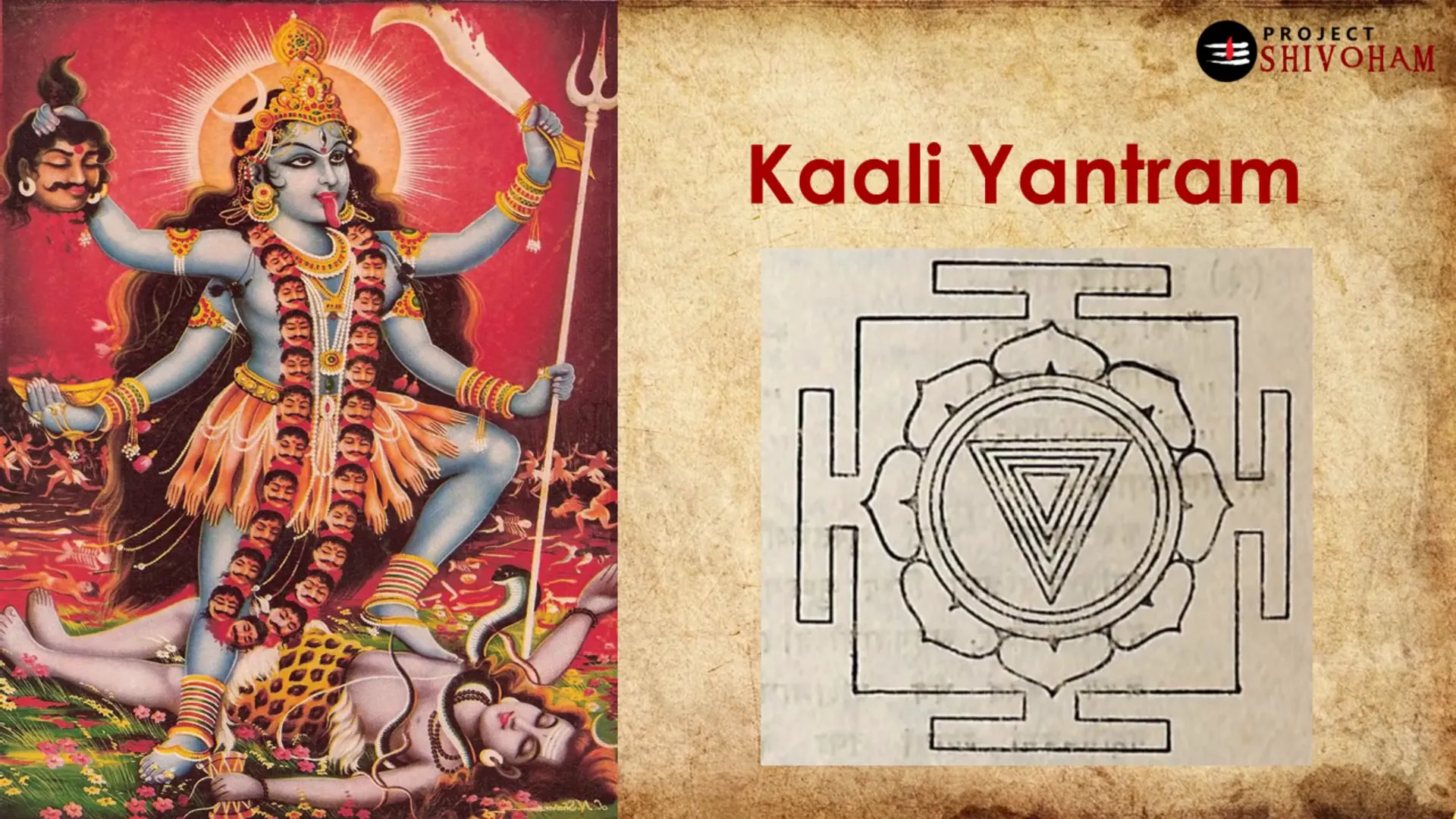
Bhairava Yantram
The Bhairava Yantram is a powerful representation of Lord Bhairava, a fierce manifestation of Shiva. This yantra is revered for its ability to dispel negativity and protect devotees from harm. The geometric intricacies of the Bhairava Yantram are designed to channel divine energies effectively, making it a significant tool in spiritual practices.
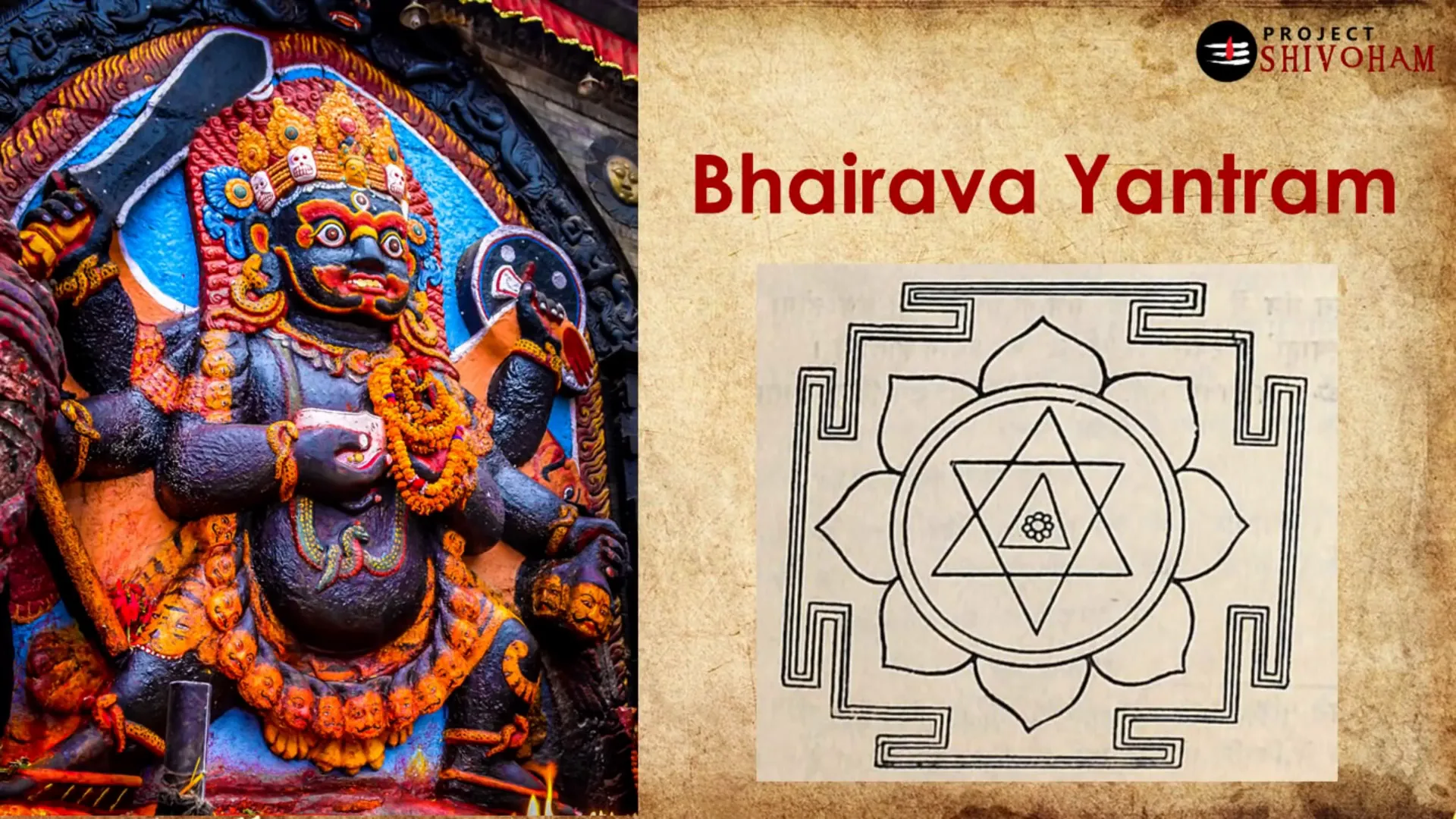
As with other yantras, the Bhairava Yantram’s design is rooted in Vedic geometry, emphasizing precise proportions and symmetry. The yantra features a central triangle, symbolizing the union of Shiva and Shakti, surrounded by intricate patterns that enhance its vibrational frequency. Practitioners believe that meditating on this yantra can invoke Bhairava’s blessings for courage and protection.
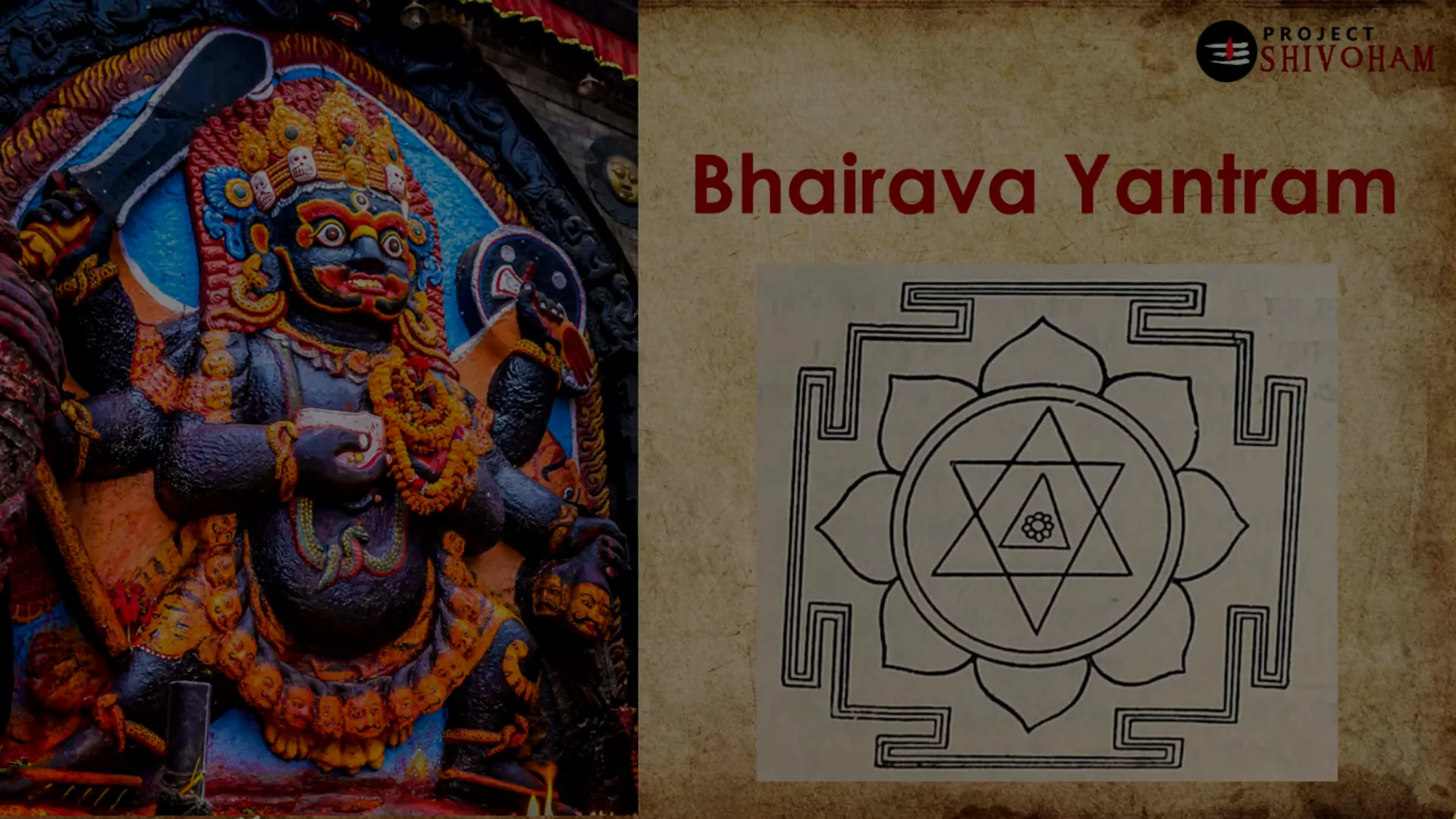
Sri Mahalakshmi Yantram
The Sri Mahalakshmi Yantram is dedicated to Goddess Lakshmi, the embodiment of wealth and prosperity. This yantra is believed to attract abundance and success into the lives of devotees. The geometric design of the Sri Mahalakshmi Yantram is rich with symbolism, representing various aspects of wealth and well-being.
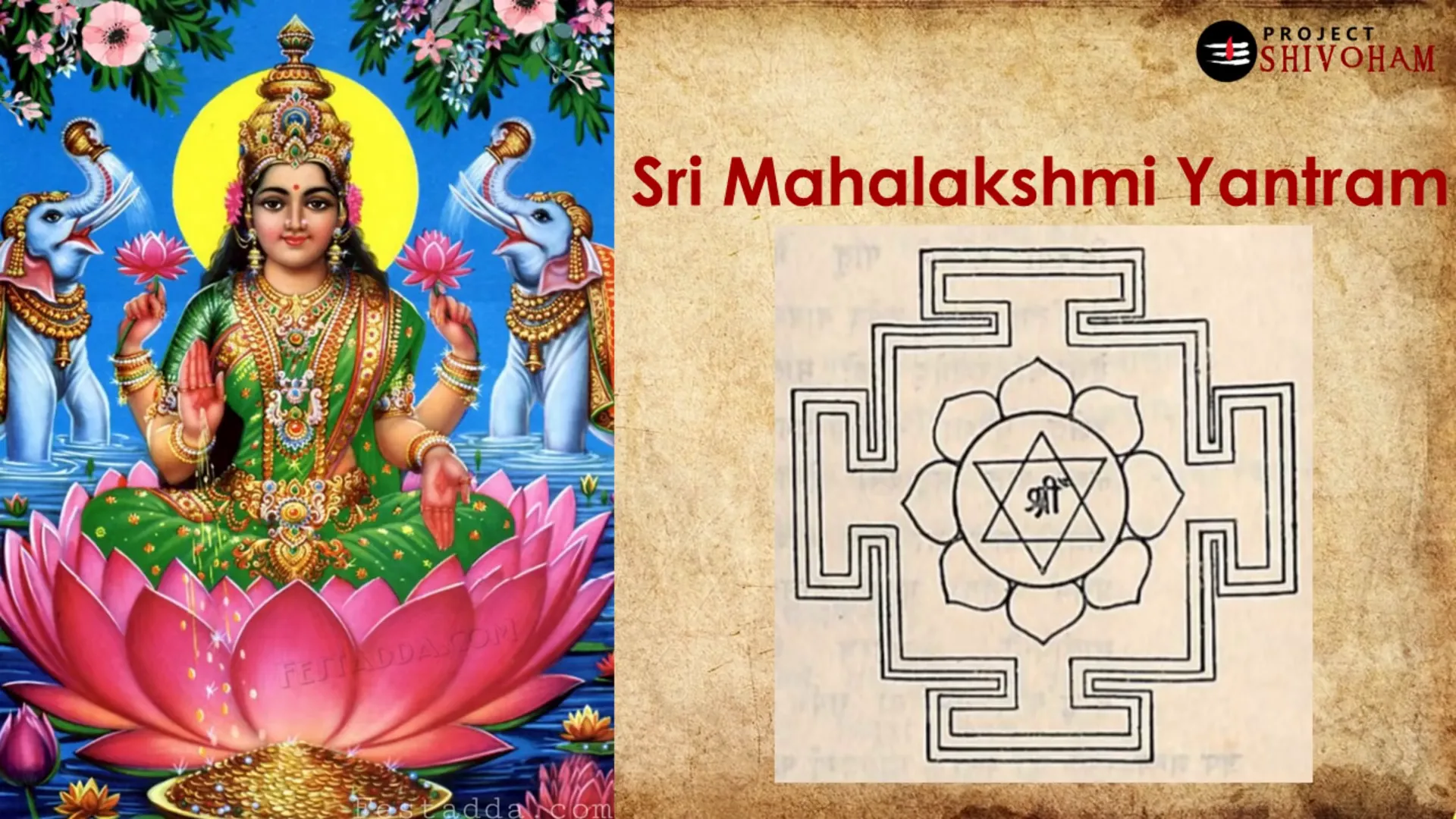
Constructed with meticulous attention to detail, the Sri Mahalakshmi Yantram incorporates multiple layers and shapes, each contributing to its spiritual energy. The yantra’s central bindu signifies the source of all wealth, while the surrounding patterns symbolize the flow of prosperity. Rituals performed with this yantra are thought to enhance financial stability and success in ventures.
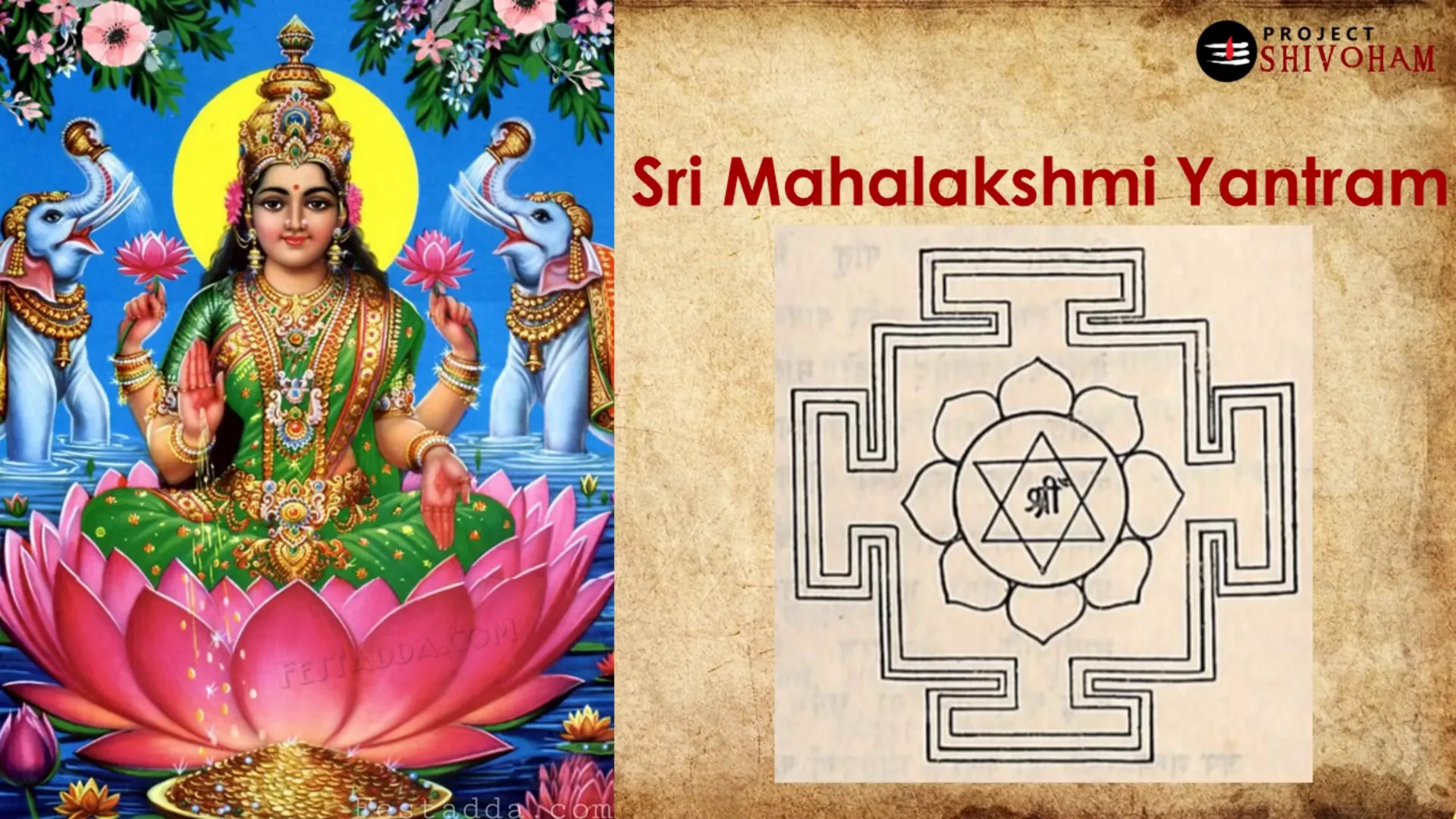
Sri Yantram
The Sri Yantram is often regarded as the most important yantra in Vedic traditions. It is a highly complex geometric structure composed of nine interlocking triangles, symbolizing the union of divine forces Shiva and Shakti. The precision of the Sri Yantram is critical; even the smallest deviation can affect its efficacy in spiritual practices.
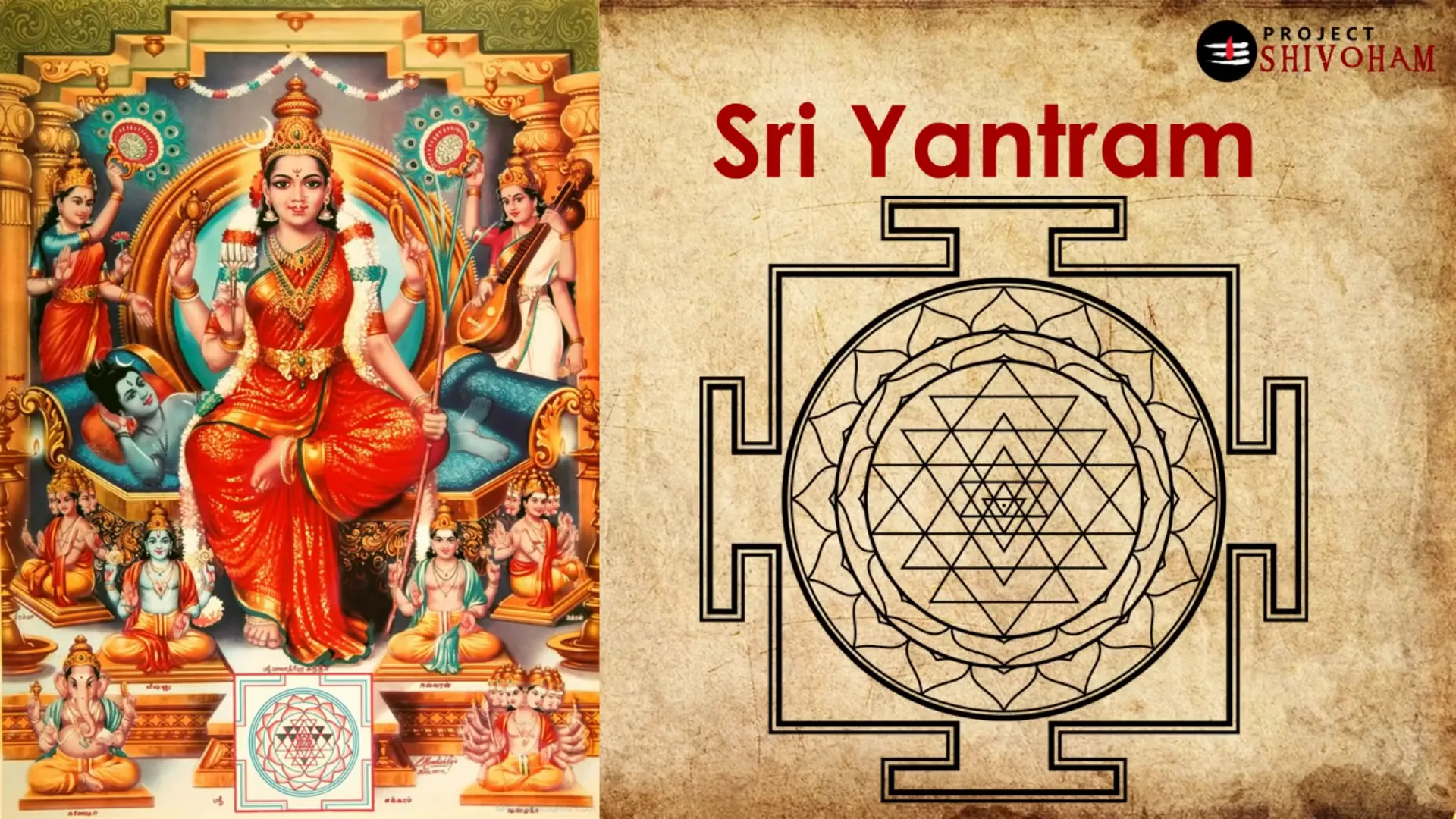
Scholars have conducted extensive mathematical analysis on the Sri Yantram, exploring its symmetrical properties and geometric intricacies. This yantra serves not only as a spiritual tool but also as a subject of study in Vedic Geometry & Mathematics Ancient India. Its design reflects the profound understanding of geometry that ancient Indian scholars possessed, merging art with spirituality.
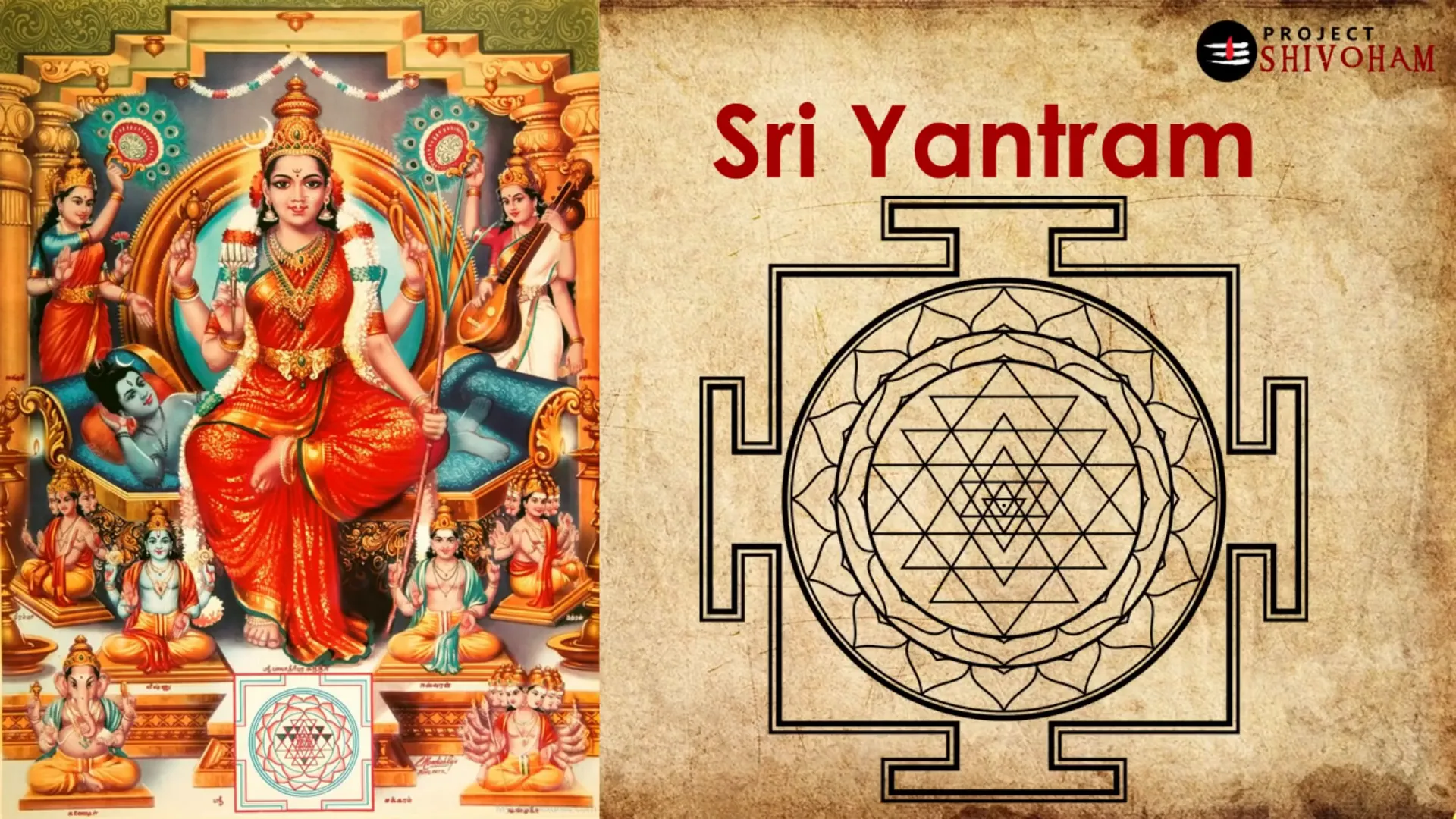
FAQ
What is a yantra?
A yantra is a mystical geometric diagram used in Hindu and Buddhist traditions for meditation, worship, and spiritual practices. It serves as a focal point for concentration, representing the divine energies of the deities.
How are yantras constructed?
Yantras are constructed using precise geometric principles derived from Vedic geometry. Each yantra is designed with specific proportions and symmetrical arrangements to enhance its spiritual power and efficacy during rituals.
What is the significance of the bindu in yantras?
The bindu, or central point, in a yantra symbolizes the source of creation and the union of the divine energies. It serves as the focal point for meditation and represents the essence of the deity to whom the yantra is dedicated.
Can anyone use a yantra for spiritual purposes?
Yes, anyone can use a yantra for spiritual practices. However, proper understanding and respect for the yantra’s significance and the associated rituals enhance its effectiveness. It is often recommended to seek guidance from a knowledgeable practitioner.
How does Vedic geometry influence the design of yantras?
Vedic geometry provides the foundational principles for constructing yantras. The intricate designs and proportions derived from Vedic geometry ensure that yantras resonate with specific energies, enhancing their spiritual effectiveness during rituals and meditations.